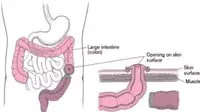Strangulation of the gut occurs when it is trapped by a hernia or a band, in volvulus, or in introsusception in such a way that its blood supply is progressively interfered with. The first effect is to compress the veins, so the involved bowel and its mesentery become blue and congested.
Onset of gangrene
Mush depends on the tightness and the constricting agent when venous return is completely occluded. The color of the intestine turns from purple to black. Owing to increased edema at the point of obstruction. The arterial supply is jeopardized in strangulation. Then peritoneal coat loses its glistening appearance. The mucous membrane becomes ulcerated and moist gangrene is imminent.
Loss of blood volume
Into the congested segment is proportional to the length of that segment. When only a few inches are involved e.g. strangulated external Hernia, the amount of blow thus arrested is not significant. On the other hand, when a large coil of intestine becomes strangulated the loss of blood is sufficient to render the patient oligemic or threatening the patient's life.
Distension
At first, the strangulated segment gas distended the greatest distension occurs when the venous return is completely disturbed. Early distension of the proximal segment is absent. By the time gangrene is imminent retrograde. Thrombosis is proceeding along the related tributaries of the mesenteric vein causing distension of proximal and distal segments of the bowel.
Trans-migration of Bacteria and Toxins
When the wall of the intestine becomes partially devitalized both the bacterial toxins and the products of tissue autolysis pass into the peritoneal cavity and there be absorbed into the circulation. This is followed by the migration of bacteria and peritonitis follows in strangulation of the gut.
Closed-loop obstruction
It is present in many cases of intestinal obstruction. This typical form is seen in the case of carcinomatous stricture of the colon. Distally the colon is obstructed by a malignant growth, while the ileocaecal valve presents the regurgitation of large bowel content to the small intestine(Ilium). Consequently, the part of the colon proximal to obstruction is closed at both ends, as a result, antiperistalsis, the pressure within the cecum becomes so high as the compress the blood vessels within the walls. If the obstruction is not relieved, ulceration, gangrene, and perforation of the caecum will eventually occur.


Post a Comment